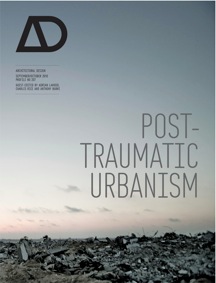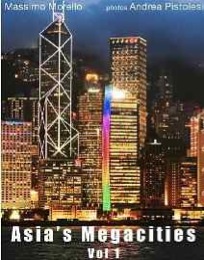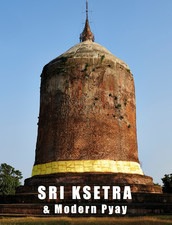Cities of the Apocalypse
03/11/10 05:33 Filed in: Dispatches
Traumatized cities, blighted by war, terrorism, demolished and bombed out buildings, tsunamis, tornados, typhoons, earthquakes, and floods feature increasingly often in our daily news. These urban spaces bear the marks and scars of the disasters that have befallen them. How can the effects of trauma be understood in urban terms? What can architecture do for a planet at war with itself? A new book analyses the consequences of trauma on cities, communities and cultures. Post-Traumatic Urbanism – published in the Profiles series of Architectural Design Magazine by the University of Technology Sydney, and edited by Adrian Lahoud, Charles Rice and Anthony Burke – explores the response of architects and urban planners to these catastrophic events.

As essential as the emergency operations and reconstruction are, architects must have a more in-depth understanding of the effects of trauma on cities and their inhabitants. Should they restore and retrieve what has been lost or should they see post-traumatic cities as a blank slate from which a new city can emerge?
Post-trauma is no longer the exception to the rule. It is the way of the world today.
In the Stories section you will find an excerpt from the introduction by Adrian Lahoud, architect, urban planner and researcher. It’s a brief, complex and abstract text. But it is from this cool and clinical distance that the aftermath of trauma can be seen more clearly. The assumption being that observation implies a consequent action.

As essential as the emergency operations and reconstruction are, architects must have a more in-depth understanding of the effects of trauma on cities and their inhabitants. Should they restore and retrieve what has been lost or should they see post-traumatic cities as a blank slate from which a new city can emerge?
Post-trauma is no longer the exception to the rule. It is the way of the world today.
In the Stories section you will find an excerpt from the introduction by Adrian Lahoud, architect, urban planner and researcher. It’s a brief, complex and abstract text. But it is from this cool and clinical distance that the aftermath of trauma can be seen more clearly. The assumption being that observation implies a consequent action.
0 Comments





